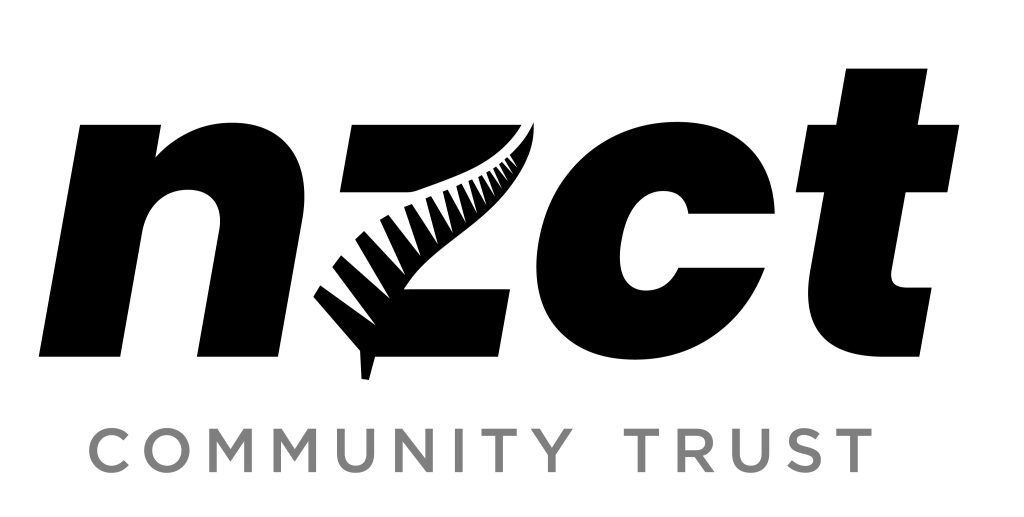History of the Academy

The history of the Wellington Judo Academy as told by Patrick Toner Sensei.
In 1955 a small group of mainly British and Dutch immigrants regularly met in the basement of the old bleak Victorian YMCA in Willis Street, Wellington, to share a common interest in Judo. In the early years, most members continued to be from Holland and the UK, some with previous experience of Judo. Unfortunately, there were no high grades amongst them, so it was all self help, and learning from each other! Many members joined because they were bored, lonely and far from home. In the six o’clock closing era Wellington was a deserted city by 6.30 p.m. Females made up close to fifty percent of the membership. Members partied together and went on weekends outings as a group. Many romances blossomed into marriage. I joined the group in December 1956 from the Slough judo club in West London. Although I had some eight years experience in the sport in many countries including Japan, I had only received my first grade of Yonkyu (Orange belt) shortly before leaving England. The club president, Len Woods, from Ealing, another London club, was the highest graded member at Nikyu (Blue belt) and like myself a former Royal Marine. Len was also the newly formed New Zealand Judo Federation’s first President. Len was a skilled toolmaker by trade and a very good organizer. Unfortunately he didn’t get along with some of the ethnic groups, consequently the first to leave the fold were the Dutch who formed a new club ‘Zealandia’ located at the wrestling clubrooms in Kilbirnie. Zealandia later changed its name to ‘Umi no Uchi’, Japlish for inland sea (Setonaikai). Next to take umbrage were the ‘Liverpool Mob’ who decamped to the Wellington rowing clubrooms on the waterfront. Unfortunately, some of the YMCA’s best competition players went with them.
Meanwhile, because Judo was the only martial art available, it was viewed by the members of the public as some deadly esoteric fighting art, or alternatively as a philosophical, meditative, mysterious secret society. We had no problem getting new members; there were seldom less than fifty recruits in each beginners class. Judo clubs were springing up like mushrooms all over the country. I used to accompany Len who was the proud owner of a Ford consul on trips around the country drumming up interest in the newly formed NZJF. I can recall visiting Eric Cresswell in Wanganui. As a member of J Force he had been exposed to Judo, and had returned to NZ on a Navy boat with a full set of Tatami and a Japanese wife. Also, Lawrie Hargrave in Auckland. Lawrie had been in Japan with the Navy but was then working as prison warden. He had also opened a Judo club and was very active in the judo political scene. His was a lively household with a number of young daughters running around and a German Shepherd that you didn’t dare turn your back on!
From its genesis, the NZJF had the problem of recognizing the credentials of club instructors and others who claimed to hold high grades in their own country. It was finally decided at a special meeting in Lower Hutt that the best way to get the sport off the ground was to recognize the grades of the those who claimed to be black belts and promote to Shodan the majority of members who were running clubs! So Len Woods was graded to Shodan the first Dan grade in Wellington. Likewise Lower Hutt’s Koizumikwai, Des Tarring was also promoted to Shodan. By coincidence, Des was also a former Royal Marine, as was Jock Munro, who later became a very competent president of the Wellington Judo Association. Koizumikwai was the first Judo club in the region, with a good membership of strong players and we often went out to practice with them at their clubrooms, situated under the stand at the Hutt park. From its inception, many members of the NZJF, preferred verbal combat, lobbying and tactics around the committee table to hard randori in the dojo! Len our first president had the honor of being the first to feel the long knives! His successor, the second president had to decamp to Sydney to avoid threatened law suits. Then Len faced another mutiny on the club level when the committee he had formed of young non-immigrants decided that they were competent enough to run the club! So for the third time in its brief existence the club was divided and lost a lot of members. Although the YMCA backed Len in the dispute, he felt very bitter and left to found the Judo club at the Boys Institute, and wisely declined to join the NZJF!
As the only experienced player left, I agreed to take charge of training, on condition that the members did the collection of fees and the other myriad tasks involved in running the club themselves.
A intermittent visitor to the club was John Burke, a steward on one of the ships on a regular run between the port of London and New Zealand. John was then a BJA Nidan and an all-round and a very skillful player from both the Budokwai and Renshuden clubs. John became enamored with a young lady in Napier and ‘jumped ship’ only to find himself in the local jail where her father was the warden! Subsequently he was deported back to the U.K. This action was to have a profound effect on the future of judo in Wellington. John told his friends back in the Renshuden about how much he enjoyed his brief sojourn in New Zealand. So he and two others, Dave Delay and Bill Tracey, soon arrived in Wellington. The effect on the club was devastating. Coming from Europe’s top competition club, Dave in particular knew only hard randori and was contemptuous of any player who couldn’t stand up to him. Completely unused to such treatment, the senior men’s membership rapidly dropped from approx’ sixty to about eight regulars. I had mixed feelings – I was not happy at the way Dave and Bill were driving out our members! But coming from a ‘take no prisoners’ style London club myself, I had to concede that this was how a senior judo club should train, and as I had made up my mind to go to Japan, I needed the training! The ladies’ and juniors’ sections were unaffected, and so enough subs came in to keep the YMCA happy! The management of the YM had mixed feelings about Judo! They looked upon us as some sort of anti-Christian fifth column, however they needed people to use their dilapidated dirty building plus the income it brought in! Len had had a good rapport with the manager, who moved us from the basement to a very large room upstairs but then offered up some feeble excuse and moved us back down again to the airless basement.
John Burke and Dave Delay thought the time was ripe for a professional club in Wellington. Importing the Tatami, they established a club with the Wellington Boxing Association above the historic old stables in Cornhill Street where the Lombard parking building now stands. They named the new club the ‘Wellington Judo Academy’. The move left the girls and juniors at the YM without an instructor. Bill Tracey stepped into the breach and volunteered to teach the girls, while G.S. took the juniors. Bill Tracey was a very popular instructor with the girls until the YMCA’s AGM when the girls voted that Bill should pay the same subscriptions as everyone else. The YM’s management supported them, and the girls were genuinely surprised when they no longer had an instructor! The Liverpool mob at the rowing club also had problems once the initial enthusiasm had waned! The problem was that the mats had to be laid out for each practice and then put away afterwards, so human nature being what it is, more and more members were arriving late and leaving early to avoid the chore – it ultimately became farcical! Then two of the chief members had a difference of opinion, And I believe they haven’t spoken to each other to this day! So with Len gone they cut their losses and moved back to the YMCA with its permanently fixed Tatami.
At that stage together with Charley Stirling who was the club’s second Maori black belt and Dave McDonald from the Invercargill club. We headed for the Kodokan, the Mecca of judo, in Tokyo. One of our instructors at the Kodokan was Don Draeger an ex-US Marine Colonel and the author of numerous books on Judo and other Martial Arts. He advised me to study other Martial arts, so he sent me to Mass Oyama’s Kyokushin Karate dojo in Ikebukuro and Ueshiba’s Aikido Honbu on the outskirts of Shinjuku. At the time I was blissfully unaware that these two Sensei were destined to become living legends and incidentally the skills I was learning would eventually save the Wellington Judo Academy from extinction. The following year (1965) I returned to Wellington to discover that the once flourishing Judo Academy was just about extinct. Dave Delay, the prime mover, now an executive with Fletchers, had been transferred to Auckland. John Burke was fully preoccupied with his building business, in addition the dark-haired Napier beauty he had married had turned out to be remarkably fertile and he had an increasing family of little girls to support. Also a small group of competition players could not provide enough income to pay a commercial rent in Wellington. I called a meeting, and four of us committed to underwriting the expenses to keep the club going! To increase membership I decided to introduce Karate and Aikido.
I taught the judo boys just enough basics to impress prospective students, then put an add in the paper. The response was overwhelming – new members flooded in, all keen to learn the new martial art. We also got the nucleus of Wellington’s first Aikido club! Now that we were teaching three martial arts it seemed appropriate to change the club’s name and so the Wellington Budokan was born. Then came another lucky stroke: the owner of the largest dry cleaning business in the region had bought a large building close to the engineering firm I was working for – I knew him well as we often did maintenance on his plants. He said he wouldn’t need the building for a while, and said I could use it rent free, for two years. The building had belonged to Parsons Bakery and was in a very dilapidated condition, full of old machinery. We even had the onerous task of disposing of 44 gallon drums full of very dead rats! Luckily we had the collective engineering and building skills between us and we soon turned it into a first class dojo with a huge membership of judo and karate players.
The two years passed all too quickly, and we moved to another premises in Frederick Street. It was affordable but far from ideal, and the spray painter on the ground floor turned us all into solvent sniffers! So we moved again to Herbert Street, which was as good a dojo as we could expect for the money! It was to be our home for the next twenty years. Finally, with the building due for earthquake strengthening, I reluctantly informed the members I was going to retire. I was getting weary of all my commitments. I was owner and manager of the Kilbirnie skating rink, owned a small engineering business, as well as having property interests, and I was in the club five evenings a week and Saturday afternoons. So the Karate club with Dave Downs in charge moved to the Newtown Community Centre. My second Aikido club had to be dissolved; the first one had decamped to the YMCA while I was overseas in Munich for the 1972 Olympics.
I was persuaded to keep the Judo club going, so I transported the mats to the wrestling gym in Kilbirnie; the previous judo club had long since disappeared. The space wasn’t suitable for senior Judo, but we soon had a flourishing junior club going. Two of the parents, Derek Pratt and Alan Hovard, were always there helping out so I slowly made myself scarce and rejoined the old YMCA club, by then enjoying good premises in the old Seamen’s Mission.
Meanwhile, we all regularly visited and trained with members of the other Wellington regional clubs, which helped to keep up a good standard in the area.
With the Liverpool mob back in the YMCA the senior Judo club soon recovered, and all went well until the site grew too valuable and the building was demolished. Then came a period of many moves! First move was around the corner to the YWCA which then in its turn, fell to the demolition crew. From there the club moved to the gym in the Tasman Street Police barracks, soon to be redeveloped as apartments. Then Jock Munro organized us into the old Seamen’s Mission, which was a great central dojo. The government’s plan to demolish the heritage building was thwarted by public protests, but that was no help to us because it was turned into private apartments. Then John Haanstra bought a large Skyline garage and placed it at the end of his garden in Hobart Street, Miramar. He soon had a large successful junior club. But only a few seniors were prepared to go over to the eastern suburbs to train. For domestic reasons and the lack of privacy, John moved the club again to the basement of the Boys Institute, where once again we were next to Brian Mahoney and his YM barbell club. By this time a local architectural firm, two of whose members were training at the club, agreed to underwrite the expenses. The club then moved again to a dilapidated building straddling Hansen and Tasman Street, next to a Kyokushin Karate club. From there we moved to the premises at 6 College Street.
The next crisis to hit the club was the lack of income to pay the rent and power bills. The architectural partnership had dissolved, and one principal was in Macau while the other had moved on to other interests, while John’s preoccupation with his family and business interests naturally had to take priority. Some members of the Wellington Judo Association decided it was a good opportunity to close the club down by seizing the judo mats, which were on loan to us. We called a crisis meeting, and some members gave and loaned money, and bills were paid. The Wellington Judo Association were paid for their tattered worn out mats. An appeal to former members, now prosperous in the hospitality trade, produced enough money to buy excellent new mats from Belgium. The club is now an incorporated society and we hope its future is assured!



